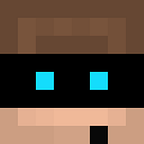How to use Gravit Designer for Laser Cutting
First of all, let me tell you what “laser cutting” is.
Laser cutting is a technology that uses a laser to cut materials, and is typically used for industrial manufacturing applications, but is also starting to be used by schools, small businesses, and hobbyists. Laser cutting works by directing the output of a high-power laser most commonly through optics. The laser optics and CNC (computer numerical control) are used to direct the material or the laser beam generated. A typical commercial laser for cutting materials would involve a motion control system to follow a CNC or G-code of the pattern to be cut onto the material. The focused laser beam is directed at the material, which then either melts, burns, vaporizes away, or is blown away by a jet of gas, leaving an edge with a high-quality surface finish. Industrial laser cutters are used to cut flat-sheet material as well as structural and piping materials. Source: Wikipedia.
For short, a laser cuts material, such as wood or plastic. We have one of these machines at my school and creating a drawing can be complicated due to limitations of the machine.
This tutorial is suitable for this machine, but should work with any machine.
Why Gravit Designer?
We have used Inkscape from the beginning, and most are still using it. But Inkscape is not intuitive — on the other hand, Gravit Designer is. For students from 13 to 17, it requires an easy software. This is where Gravit comes into play. Easy to use and intuitive, it allows to create drawings for the machine in a record time.
Creating a document
Even if this seems the easiest step, you have to be careful. You must choose a “real-world” unit of measurement (cm, mm, in). This will help you get an idea of the final product.
Tips for drawing
Only use the parameters that the software will recognize
Depending on your configuration, you have several modes. These modes normally work with a specific colour code. For this tutorial, I made a list of our modes.
Red (’#FF0000 ’): cutting
Black (’#000000’): drawing
If it’s red, it may not be completely red. All you need is a little bit of green (’# FF0100’) and the software will not recognize anything.
Also, the intensity should always be 100%.
Line width
If the line is not thick enough, the machine will not see it. For red lines, if it is too thick, the object may ignite… I recommend a thickness between 1 and 1,5 pt.
Do not forget the outline
If you are sharing your material with someone else, it would be better to make an outline around your design. Thanks to this, you can detach your design from the rest of the material. This outline should be red.
Do not put anything between the red lines
Except for the outline.
In my example, I have a rectangle with a red border around the “GRAVIT” word. After cutting, the piece with the word “GRAVIT” will fall … and I’ll have two objects instead of one.
Vectorize your images
If you have any images on your drawing, you should vectorize them beforehand. A vector image is much more accurate than a raster image.
In most cases, a raster image still works, but with a less beautiful result.
You can add an image in Gravit using the “File” menu then Import and Place Image… Alternatively, simply copy/paste it width Ctrl/Cmd + C and Ctrl/Cmd + V or drag it in.
You can also vectorize your image in Gravit using the Modify > Path > Vectorize Image.
Tips! On Google Images, use the “Tools” menu, then “Type” and “Line Drawing.” These images are easier to convert.
Don’t forget to change the colour to either black or red.
Before exporting, trim your canvas
To prevent loss, please trim your object. To do this, click anywhere in the background of your file (not your drawing, beside it). Then, on the right panel, click on the menu left of the dimensions and choose Trim Canvas. Note: From Gravit Designer 3.2 on, there is a dedicated “Trim Canvas” button available. The file will now have the size of your drawing.
Exporting
Now that you have a nice drawing, it’s time to export it. For our setup, we export the drawing as a PDF and then open it in a PDF reader. After that, we just have to “print” the document to the laser cutter (in my case Trotec) software and we have our object!
The Final Drawing
Do you also use Gravit Designer to create material for laser cutters? Please post your designs and the created objects to the comments.
